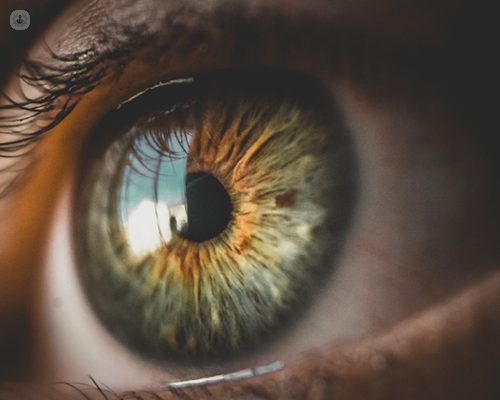Refractive lens exchange and presbyopia
Written in association with:Presbyopia is a common age-related vision condition that typically begins to affect individuals in their 40s. It happens when the natural lens of the eye loses flexibility, and it becomes difficult focussing on close objects. For those seeking a long-term solution to presbyopia, refractive lens exchange (RLE) has emerged as an effective treatment option.

What is refractive lens exchange?
Refractive lens exchange, also known as lens replacement surgery or clear lens extraction, involves removing the eye’s natural lens and replacing it with an artificial intraocular lens (IOL). The procedure is similar to cataract surgery, but instead of removing a cloudy lens, RLE addresses refractive errors to improve vision.
RLE is often recommended for individuals who are not suitable candidates for laser eye surgery due to high refractive errors or age-related presbyopia. It can correct a range of vision problems, including myopia (nearsightedness), hyperopia (farsightedness), and astigmatism.
How does RLE work for presbyopia?
RLE can correct presbyopia by replacing the eye's inflexible natural lens with a multifocal or accommodating IOL. These lenses are designed to provide clear vision at multiple distances, reducing or even eliminating the need for reading glasses or bifocals.
- Multifocal IOLs: These lenses have different zones to allow focusing at near, intermediate, and distant points. They can help achieve a broader range of clear vision.
- Accommodating IOLs: These lenses move or change shape inside the eye to mimic the natural focusing ability of the human lens, allowing for improved near and distance vision.
What are the benefits of refractive lens exchange?
- Long-lasting solution: RLE permanently replaces the natural lens, meaning the results are enduring and cataracts cannot develop in the future.
- Improved vision: The procedure can greatly reduce dependency on glasses or contact lenses for most activities.
- Versatility: RLE is suitable for patients with a range of refractive errors and those who are older, making it an ideal solution for presbyopia.
- Prevention of cataracts: Since the natural lens is replaced, the risk of developing cataracts is eliminated.
What to expect during and after the procedure
RLE is typically performed on an outpatient basis under local anaesthesia, meaning the eye is numbed, but the patient remains awake. The procedure usually takes about 15-30 minutes per eye, with each eye being treated on separate days.
Recovery involves:
- Initial healing: Most patients experience improved vision within a few days, although full visual stabilisation may take a few weeks.
- Mild discomfort: Temporary side effects, such as dryness or light sensitivity, can occur but generally resolve within days to weeks.
- Follow-up visits: Regular post-operative check-ups help monitor the healing process and ensure optimal outcomes.
Risks and considerations
Like any surgical procedure, RLE carries some risks, including:
- Infection or inflammation
- Glare or halos, particularly with multifocal lenses
- Residual refractive errors requiring enhancement
- Retinal detachment (rare)
Choosing a skilled ophthalmic surgeon experienced in lens replacement surgery is crucial to minimise these risks and achieve the best results.
Refractive lens exchange is a highly effective treatment for presbyopia and other vision issues in older adults. By replacing the eye's natural lens with an advanced IOL, patients can enjoy clearer vision at multiple distances and reduce their dependence on glasses. Discussing the available options and potential outcomes with an experienced eye surgeon will help determine if RLE is the right solution for your vision needs.


